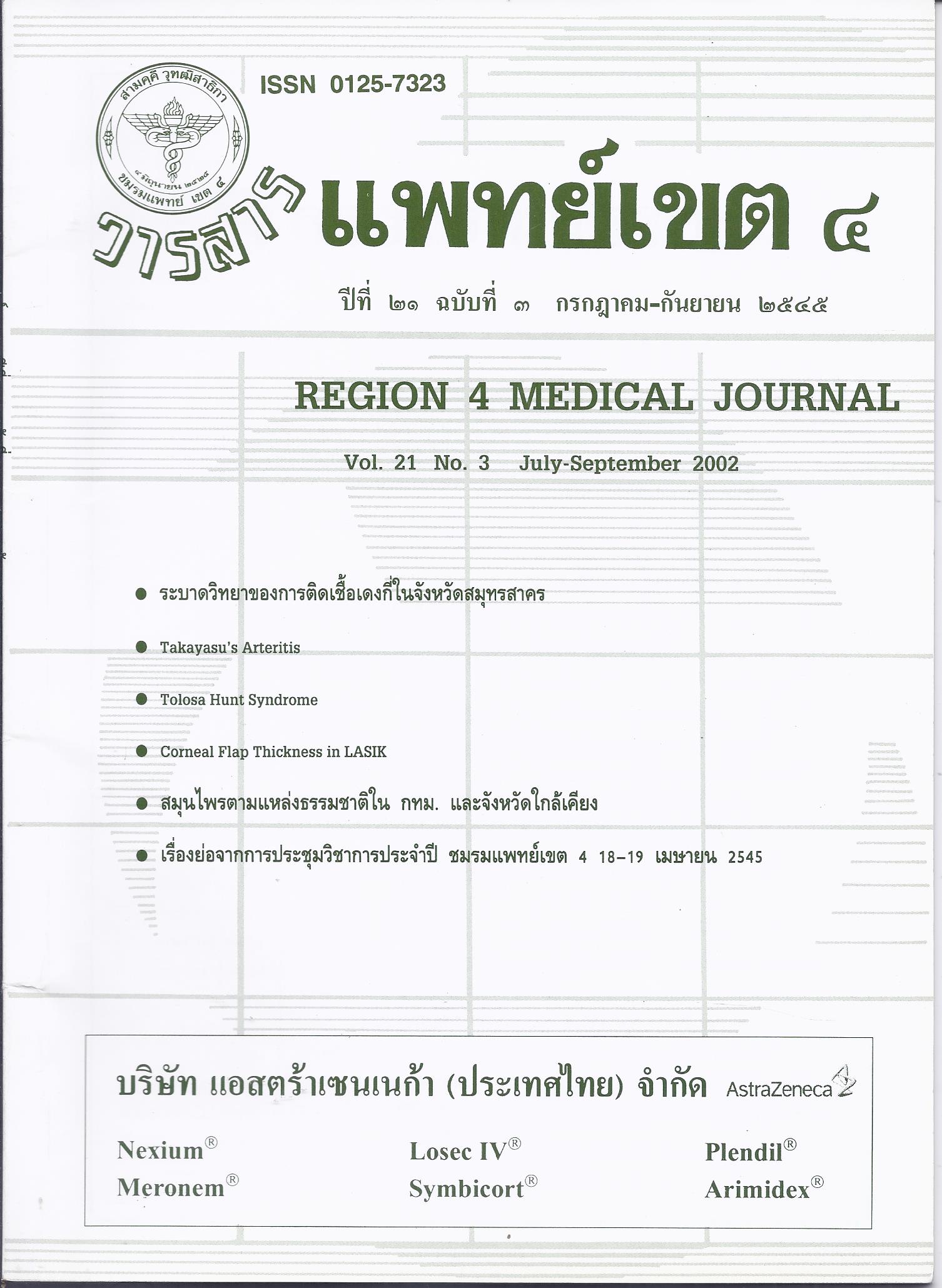Epidemiology of Dengue Infection in Samut Sakhon Province
Keywords:
Dengue hemorrhagic fever, Dengue fever, Dengue shock syndrome, Serotype, Samut SakhonAbstract
Dengue hemorrhagic fever is one of most important infectious diseases in every pan of Thailand. Dengue virus occurs as four distinct serotypes, each of which causes epidemics throughout the tropical and subtropical regions. Many studies have examined co-circulation of multiple dengue virus serotypes in population over time and their capacity to produce severe dengue diseases. This study showed the relation of dengue serotypes and clinical diagnosis, population characteristic and severe dengue diseases. Definited diagnosis of dengue infection usually made by serology such as enzyme linked immunosorbent assay (ELISA), but serological techniques do not identify the infecting strain. The reverse transcription polymerase chain reaction (RT-PCR) can detect and identify all four serotypes of dengue viruses simultaneously in nested procedure. We used IgM & IgG capture ELISA to detect dengue virus by using the plasma of 553 patients with clinical diagnosis of dengue infection in Samut Sakhon province from July 2000 to 2001, and used RT-PCR method to isolated dengue virus. A total of 110 dengue virus isolates were obtained from acute dengue virus infection ; 10.0% were DEN-1, 45.5% were DEN-2, 20.9% were DEN-3, 5.4% were DEN-4 and 18.2% could’t identified. Conclusion of this study, dengue virus can infect in higher age population and all dengue serotypes can be found in Samut Sakhon province, although DEN-2 produced more severe symptoms than the other dengue serotypes.
Downloads
Published
How to Cite
Issue
Section
License
ลิขสิทธิ์บทความเป็นของผู้เขียนบทความ แต่หากผลงานของท่านได้รับการพิจารณาตีพิมพ์ลงวารสารแพทย์เขต 4-5 จะคงไว้ซึ่งสิทธิ์ในการตีพิมพ์ครั้งแรกด้วยเหตุที่บทความจะปรากฎในวารสารที่เข้าถึงได้ จึงอนุญาตให้นำบทความในวารสารไปใช้ประโยชน์ได้ในเชิงวิชาการโดยจำเป็นต้องมีการอ้างอิงถึงชื่อวารสารอย่างถูกต้อง แต่ไม่อนุญาตให้นำไปใช้ในเชิงพาณิชย์




